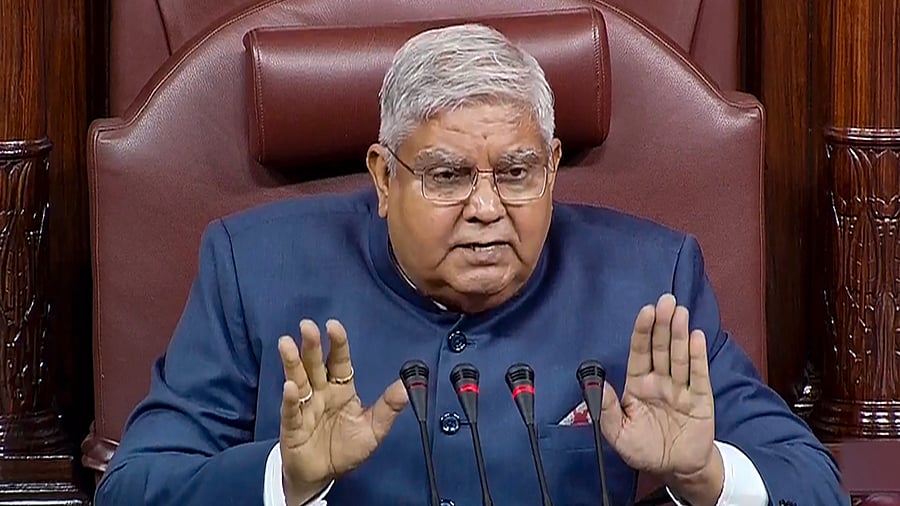
Former Rajya Sabha Chairman Jagdeep Dhankhar
Credit: PTI File Photo
The sudden and unexpected resignation of Vice-President Jagdeep Dhankhar has precipitated elections to appoint a successor, with the Election Commission (EC) having already started off the process.
With vice-presidential elections around the corner, DH's Sumit Pande explains the electoral process.
Who conducts vice presidential elections?
The Election Commission of India conducts the elections under Articles 64 to 68 of the Constitution and the Presidential and Vice-Presidential Elections Act, 1952.
What’s the process?
The V-P is elected by an electoral college comprising members of the Rajya Sabha and the Lok Sabha, both elected and nominated. The elections are not direct but are held by the method of proportional representation.
Who is the returning officer?
The EC, by rotation, nominates the secretary general, Lok Sabha, or the Rajya Sabha as the returning officer.
What is the time required to conduct the polls?
The entire process takes over a month. The nomination closes 14 days after the notification of the elections. Scrutiny of papers is done a day after the last day of filing nominations. Candidates are allowed to withdraw in the next two days. Those who remain in the fray get two weeks to run their campaigns before the day of polling.
Are special ballot papers used for V-P polls?
Yes. Pink ballot papers are used. They are printed in Hindi and English, and have two columns; the first carries the names of candidates, while the second column is for electors to mark their preference against the name of each candidate.
Where are the elections held?
The voting is held in the Parliament House.
Are the electors bound by the party whip?
The voting is by secret ballot. Whip does not apply. Electors can vote according to their choice.
Where is the counting held?
Counting is held on the day of voting in the same room in the Parliament House where the voting is conducted.
Is the winner decided based on a simple majority?
Since the elections are held as per the process of proportional representation according to the single transferable vote, the winner has to secure 50% of the valid votes cast plus 1.
Can V-P elections be challenged?
The elections can be challenged before the Supreme Court by a candidate or 10 or more electors together, within 30 days of the publication of results.